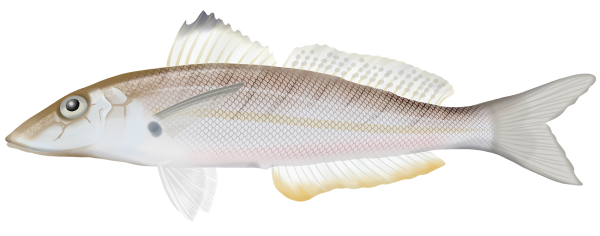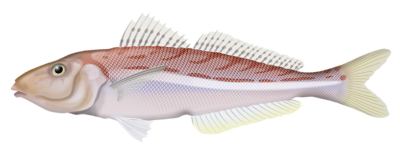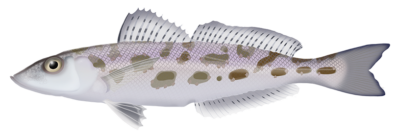Quick Facts
Distribution

Interesting Info
- The Western School Whiting is a coastal marine fish species primarily found along the western coast of Australia. They are commonly distributed from Shark Bay down to southern parts of Western Australia.
- They have a slender body shape, with a coloration that varies from light silver to pale golden on the upper body, gradually fading to a silvery-white underside. They have a series of dark vertical bars along their sides and a distinct black spot at the base of the pectoral fin.
- They are a carnivorous species that primarily feeds on small crustaceans, fish, and fish larvae.
- As their name suggests, Western School Whiting have a strong tendency to form large schools, particularly during the breeding season. These schools can consist of hundreds to thousands of individuals.
- Western School Whiting are well-adapted to estuarine environments, as they can tolerate a wide range of salinities. They often migrate into estuaries to feed and find shelter.
- They have the ability to change their body coloration to match their surroundings, which helps them blend into their sandy or muddy habitat and provides them with a certain level of camouflage.
- During the breeding season, male Western School Whiting produce a distinctive “drumming” sound by rapidly vibrating their swim bladder. This sound is believed to play a role in courtship and attracting females. They also develop prominent tubercles or small bumps on their heads and dorsal fins to aid in the courting of a mate.
- Breeding for the Western School Whiting typically occurs during the warmer months, from late spring to early summer. They prefer to spawn in shallow coastal waters with sandy or muddy bottoms.
- Their estimated average lifespan is between 6 – 8 years.
Species Interaction
Recreational Fishing, Snorkeling & Diving
The Western School Whiting is a popular target for recreational fishing in Australia. They are sought after for their delicious white flesh and make for excellent table fare. Anglers typically use lightweight spinning or baitcasting tackle to catch them. Common bait options include small pieces of prawns, worms, or squid. Snorkelers and divers, can easily find them as they often swim in large schools, making them easily visible and allowing for close encounters.
Scientific Classification
Kingdom: Animalia
Phylum: Chordata
Class: Actinopterygii
Order: Perciformes
Family: Sillaginidae
Genus: Sillago
Species: Sillago Vittata
Conservation Status
The Western School Whiting is listed as a species of least concern in terms of conservation status in Australia. It is not currently considered to be at risk of extinction or in need of special conservation efforts.
Fish Taste Quality
The Western School Whiting is a highly sought-after fish for its mild and delicate flavour. Its moist, tender flesh has a fine flaky texture that is well-received by seafood lovers.
Taste Rating: 4/5
How to catch
Western School Whiting
Catch Difficulty: Intermediate
Tackle: Running Sinker Rig, Artificial Rig
Bait: Crab, Fresh cut flesh baits, Lures, Pilchards, Prawns, Squid, Worms, Yabbies
Technique: Cast bait/jig/lure near schooling fish
Popularity: Highly targeted
Recreational Viewing
- Snorkeling & Scuba
Finding: Easy
Temperament: Shy
Location: Lagoon, Sandflats
Danger: None





